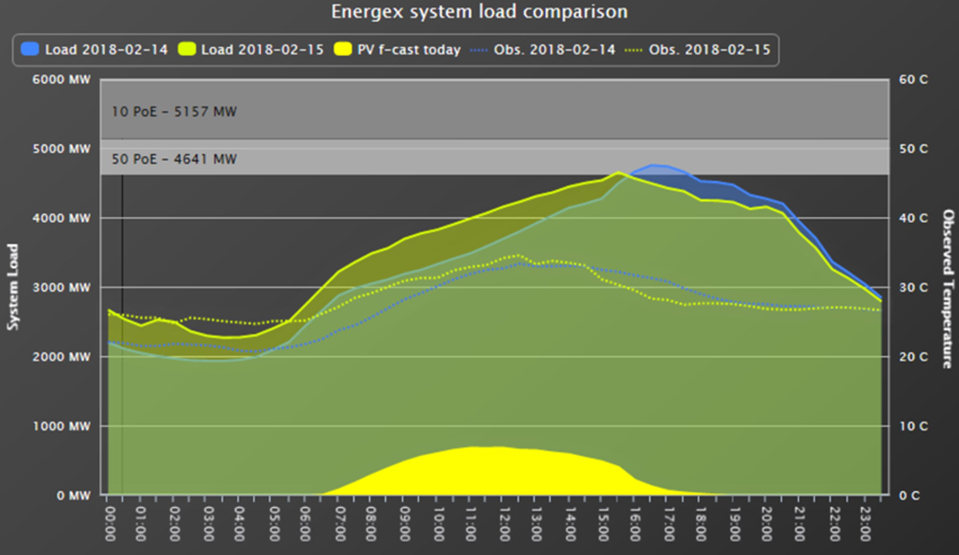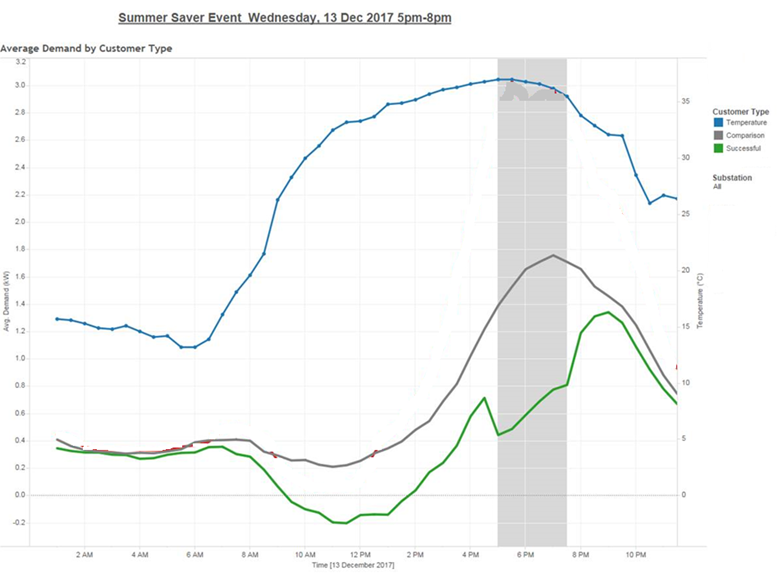Demand management is the new black
Demand management is the new black, following closely behind its contemporaries in the energy innovation space, solar and batteries.
The east-coast heatwaves of Summer 2017 was a key turning point in the emergence of demand management and the results of various trials taking place across the country continue to emerge. Just this week, Canberra distribution network, Evoenergy, announced it has conducted seven successful demand management trials in the past six months, including a Virtual Power Plant comprising more than 400 residential batteries.
Believed to be the largest and most comprehensive trial in Australia, their multi-platform testing provided ‘proof of concept’ that when scaled up their demand management program will prevent load shedding in almost all circumstances. It’s anticipated that by 2020 the ACT will have enough battery capacity for Evoenergy to double the 18 megawatt load that it was able to curtail during the heatwave crisis.

Evoenergy’s Network Controller Andrew Gorton monitoring the impact on the network during the Demand Management trials. Photo credit: Sophie Burmester
This isn’t just about shiny new tech – there’s a demonstrable benefit to customers. The Electricity Network Transformation Roadmap demonstrates how networks could buy grid support from millions of customers with solar, storage and smart homes through demand response programs, with annual payments worth $1.1 billion within 10 years.[1] Through such measures, it is projected that up to $16 billion in network infrastructure investment could be avoided by 2050.[2]
Demand management represents an alternative to building traditional network infrastructure to meet peak demand. It can also address risks associated with equipment failure and delay the retirement or replacement of aging assets.
Arguably, the regulatory framework has historically not had the flexibility to support these alternative solutions. However, the Australian Energy Regulator has recently approved a Demand Management Incentive Scheme that will encourage the adoption of innovative non-network options that benefit customers through reduced costs over time. The Scheme is the start of a rollout of new arrangements which will see customers incentivised to reduce peak demand or provide network support services that improve the system’s efficiency for everyone.
Facilitating an environment that promotes network innovation in this area is vital because it ultimately lowers costs for customers by seeking new solutions. The Australian Energy Regulator’s scheme contributes towards this goal. It includes incentives and safeguards to ensure that demand management projects deliver best value solutions for customers. The Australian Energy Market Commission is currently consulting on the rule change that would bring the scheme into effect as early as possible.
Incentivising temporary demand reduction
Systems that reward customers for using distributed energy resources to provide services back to the grid already exist. For example, Energy Queensland has successfully undertaken off-peak hot water programs and PeakSmart air conditioning for many years.
These programs allow for targeting of localised peak demand at zone substation levels ‘in the right place, at the right time’, as opposed to a system wide peak demand.
Figure 1 shows that despite consecutive days of extreme temperature experienced in February 2018, there was no major loss of supply events in the Energex part of the Energy Queensland service area, which demonstrates that PeakSmart and hot water load control are integral to the security of supply.
PeakSmart air-conditioning during events, which typically occur twice a year, results in reliable and sustained demand reductions for the period of the event and does not compromise the comfort of the majority of the customers in affected areas.[3]
Figure 1 Energex peak demand February 2018[4]

Importantly, demand management provides networks with a new platform to work with customers. United Energy’s Summer Saver[5] program builds on this concept by using demand management programs to empower customers to make informed decisions about their energy use, providing benefits to both customers and the network.
Summer Saver is a voluntary program that rewards customers for reducing electricity consumption when asked by the network. The program started in 2013-14 as a trial funded through the Demand Management Incentive Scheme
.Program participants are informed via the United Energy Smart Energy app and an email 24 hours before the ‘event day’ about the exact three-hour event period. Customers can earn a reward if they are able to reduce their consumption during this window compared to their previous consumption.
Figure 2 shows 1kW demand reduction achieved per customer during the event on 13 December 2017.
Figure 2 Summer Saver Event, Wednesday 13 December 5-8pm[6]

Incentivising permanent demand reduction
Demand management has been successfully used to defer demand-driven network investment. However, it can also address risks associated with equipment failure and delay the retirement or replacement of aging assets.
There are limited examples of demand management being used for this purpose. Ausgrid’s new innovation project aims to fill this critical research gap. The $2.25 million project is funded through the AER’s Demand Management Innovation Allowance and the City of Sydney.
The importance of such research cannot be overstated – the AER’s analysis suggests that replacement capital expenditure will be a more significant proportion of total capital expenditure compared to augmentation capital expenditure going forward.[7] In Ausgrid’s case alone, more than 80 per cent of capital investment expenditure over the next five to ten years is related to the retirement and replacement of aged assets.[8]
Figure 3 demonstrates the challenge of using demand management solutions for replacement and retirement needs. The network support needs to provide a much longer and larger demand reduction in order to manage the load at risk associated with an asset failure.[9]
Figure 3 Demand management for replacement needs[10]

The Ausgrid innovation program will provide incentives to take up permanent demand reduction technologies by customers. This differs from incentivising reductions for only a few hours when the peak is highest. Permanent reductions can be achieved through on-site generation such as solar power or customer energy efficiency measures. Ausgrid has estimated that the program will reduce emissions by about 10,000 tonnes a year, which is equivalent to taking 2,500 cars off Sydney’s roads.[11]
Conclusion
Demand management is rapidly changing to reflect new technologies and opportunities for customer benefits, including network support services for micro-grids, standalone power systems, peer to peer trading and electric vehicles. The Demand Management Incentive Scheme and Allowance will remain an important tool to develop new technology solutions and refine existing techniques to deliver reliable and cost-effective alternatives to building traditional ‘poles and wires’.
However, networks are now restricted from investing in assets “behind the meter”. This is where partnerships with non-network market providers are expected to help networks meet customer needs.
Restricting networks ability to work with customers in this way may stifle innovation and add costs to customers. Arguably customers will not care who provides the service as long as it is done at least cost.
[1] Energy Networks Australia – CSIRO, The Electricity Network Transformation Roadmap Final Report, p.ii.
[2] Energy Networks Australia – CSIRO, The Electricity Network Transformation Roadmap Final Report, p.16.
[3] Energex, part of the Energy Queensland Group, Demand Management Plan 2017-18, p.17.
[4] Supplied by Energy Queensland
[6] Supplied by United Energy
[7] AER, State of the Energy Market 2017, p.112.
[8] Ausgrid Innovation Project Demand Management for Replacement Needs, p.2.
http://cdn-au.mailsnd.com/15915/GmYnCxcKWZtzdMdvgDsq1UdH7d8dYx3jBjX-E-RwldI/2530971.pdf
[9] ibid, p.2.
[10] Ibid, p.2.
[11] Ausgrid Media Release, Incentive to increase renewables in the City, 6 March 2018


